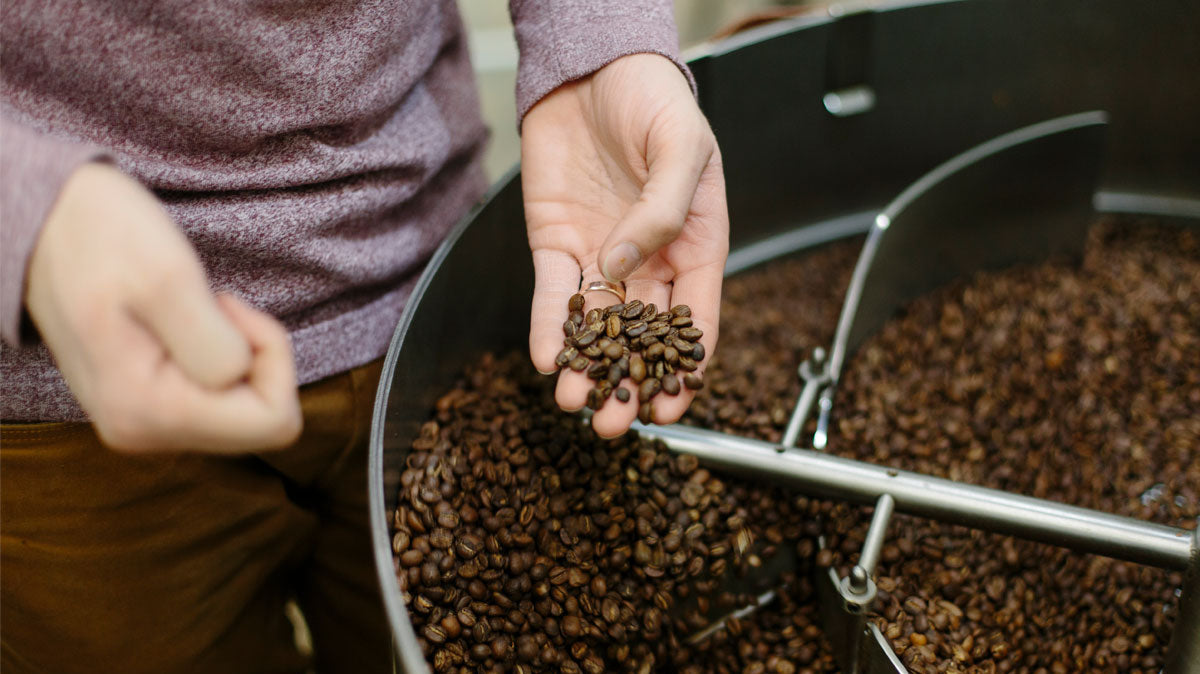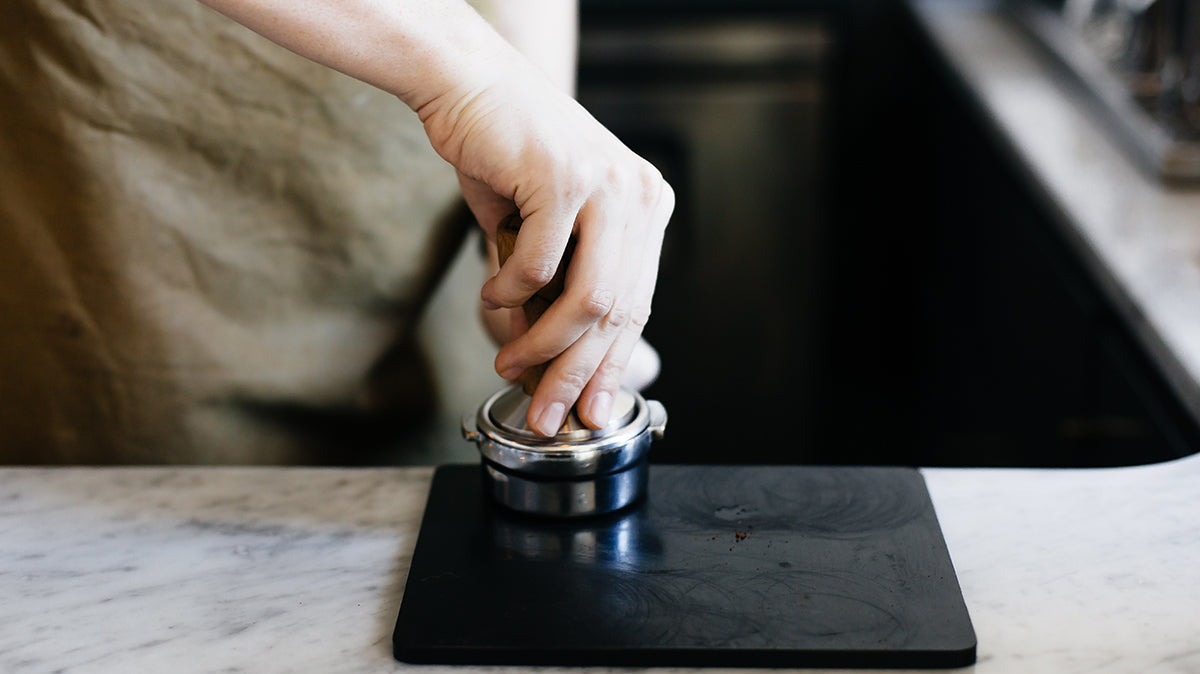Choosing the right coffee grinder can significantly impact the quality of your brew, whether you're a casual drinker or a dedicated coffee aficionado. In this guide, we'll explore the key differences between electric and manual coffee grinders, helping you make an informed decision based on your brewing preferences. Understanding the pros and cons of each type will ensure you select the perfect grinder to elevate your coffee experience.
What is a Manual Coffee Grinder?
A manual coffee grinder is a very simple but effective tool for grinding coffee. These grinders produce uniformly ground coffee in a few different types of grind sizes. They’re handheld and easily portable, features appreciated by those who like to make their own coffee while they travel.
Manual coffee grinders consist of a small hopper for coffee beans, the grinding mechanism, and a small chamber at the bottom to collect the ground coffee. Everything is connected by a single rod that turns the grinding mechanism when cranked. Manual coffee grinders can use either burrs or blades, but burrs are more common in manual grinders due to their superior grind consistency.
Check out the Hario "Mini-Slim+" Ceramic Coffee Mill →
What is an Electric Coffee Grinder?
Electric grinders are fairly similar in construction to manual grinders. The primary components of an electric coffee grinder include a motor that powers the grinding mechanism, making the process quick and efficient, and the grinding mechanism itself, which can either be a blade or a burr. Additionally, electric grinders feature a hopper to hold the coffee beans before grinding and a grounds container to collect the ground coffee afterward.
Electric coffee grinders are typically a bit more high-tech than manual coffee grinders, allowing you to fine-tune the grind size to suit a wider variety of brewing methods. High-capacity electric burr grinders are commonly found in cafes and coffee shops due to their convenience and reliability.
Check out the Fellow Ode Brew Grinder →
Blade vs. Burr Coffee Grinder
When choosing a coffee grinder, it’s crucial to understand the differences between blade, flat burr, and conical burr grinders. Each affects the quality of the grind and, consequently, the taste of the coffee in unique ways.
Blade Coffee Grinder
Blade coffee grinders use a blade that spins rapidly to chop coffee beans, similar to a blender. This usually results in an inconsistent grind, yielding a mixture of finely ground and coarsely ground coffee in the same batch. That being said, blade grinders are typically the most affordable and accessible option.
Advantages
- Cost: Blade grinders are typically cheaper than burr grinders.
- Simplicity: Easy to use and usually compact, taking up less space.
Disadvantages
- Grind Quality: Inconsistent grind size can negatively impact the flavor and quality of the coffee.
- Heat: The high-speed blades can generate heat, which might alter the flavor of the coffee.
Flat Burr Coffee Grinder
Flat burr grinders use two flat plates (burrs) that lie horizontally on top of each other. The beans are ground between the burrs which provides a much more consistent and uniform grind compared to blade grinders. Flat burr grinders are more expensive than blade grinders, but prices can vary widely based on quality and brand.
Advantages
- Grind Precision: Offers uniform grind size, which is crucial for a balanced extraction and better-tasting coffee.
- Speed: Typically grinds faster than conical burr grinders.
Disadvantages
- Heat: Can generate more heat due to the higher RPMs needed, potentially affecting the coffee flavor.
- Noise: Often noisier than conical burr grinders.
Conical Burr Coffee Grinder
A conical burr grinder uses two cone-shaped burrs, with one sitting inside the other, to grind beans vertically. This mechanism provides a consistent grind size, making it a preferred choice among coffee enthusiasts. In terms of price, conical burr grinders are similar to flat burr grinders, with prices ranging from moderately expensive to very high, depending on the quality.
Advantages
- Grind Quality: Consistent and precise grind size, which is ideal for a variety of brewing methods.
- Heat Management: Generates less heat due to lower RPMs, preserving the coffee’s flavor.
- Noise: Generally quieter compared to flat burr grinders.
Disadvantages
- Price: Can be more expensive than blade grinders and some flat burr grinders.
- Speed: Might grind slower compared to flat burr grinders.
The Importance of a Good Grind
So, why does it matter what kind of coffee grinder you have? We’ve said it before and we’ll say it again: a consistent grind is crucial when making coffee because it significantly impacts the flavor, extraction, and overall quality of the brewed coffee. Here’s an in-depth look at just how important a good grind is for your coffee.
Even Extraction
Coffee extraction refers to the process of dissolving the desirable flavors from the coffee grounds into the water. When the grind size is consistent, the water can flow evenly through the coffee grounds, extracting the right balance of flavors. Inconsistent grind sizes lead to uneven extraction, where some grounds are over-extracted (resulting in bitterness) and others are under-extracted (resulting in sour or weak flavors). A bad grind can result in a muddled flavor, where the complexities and nuances of the coffee beans are lost.
Control Over Brewing Variables
Different coffee brewing methods require different grind sizes to achieve the best results. For instance, espresso requires a fine grind, while a French press needs a coarse grind. A consistent grind ensures that you can accurately control this variable, leading to predictable and repeatable results. Inconsistency in grind size makes it difficult to fine-tune the brewing process.
Aroma
The size and uniformity of coffee grounds affect the release of aromatic compounds during brewing. Consistently ground coffee will release its aromas more evenly, enhancing the sensory experience of drinking coffee. Unevenly ground coffee may not release these aromas as effectively, diminishing your overall coffee experience.
Clarity and Body
Consistent grind size contributes to the clarity and body of the coffee. For example, a finer, uniform grind will produce a clearer cup of espresso with a smooth body, while a coarser, uniform grind will result in a full-bodied French press coffee with less sediment.
Brewing Efficiency
With a consistent grind, the brewing process becomes more efficient. The water can pass through the coffee grounds at a steady rate, reducing the risk of channeling, where water finds the path of least resistance and bypasses some of the coffee grounds; when this happens, you get a weak-bodied coffee and a subpar flavor profile in the final brew.
Learn how to grind coffee beans with our thorough guide →
Manual vs. Electric Coffee Grinders
The choice between manual and electric coffee grinders depends on your priorities and needs. Manual grinders are great for those who value portability, cost-effectiveness, and a hands-on approach. Electric grinders offer speed, convenience, and ease of use, making them ideal for daily home use or for larger quantities of coffee.
Here is a more in-depth comparison of the two grinder options.
Manual Coffee Grinders
Pros
- Portability: Manual grinders are compact and lightweight, making them perfect for travel and outdoor use.
- Cost-Effective: Generally less expensive than electric grinders, making them accessible for those on a budget.
- Quiet Operation: They’re less noisy compared to electric grinders.
- Durability: Fewer mechanical parts mean manual grinders are often more durable and have a longer lifespan.
- Consistency: High-quality manual burr grinders can provide a consistent grind, which is crucial for good coffee.
Cons
- Effort: Requires physical effort to grind the coffee, which can be tiresome if you’re grinding large quantities of coffee.
- Time-Consuming: Grinding coffee manually takes a little longer than using an electric grinder, which might be inconvenient for some.
- Capacity: Typically, manual grinders have smaller capacity hoppers and grounds containers, limiting the amount of coffee that can be ground at one time.
- Grind Adjustment: Some manual grinders can be more difficult to adjust for different grind sizes compared to electric models, limiting the variety of brew methods you can utilize.
Electric Coffee Grinders
Pros
- Speed and Efficiency: Electric grinders can grind coffee beans quickly, making them ideal for daily use and large quantities.
- Convenience: The motor does all the work, so you can multitask while your coffee grinds.
- Consistency: High-quality electric burr grinders provide a consistent and uniform grind, crucial for optimal flavor extraction.
- Adjustable Settings: Many electric grinders come with easily adjustable settings for different grind sizes, making them worthwhile for those who enjoy a variety of brewing methods.
- Capacity: Generally have larger hoppers and grounds containers, allowing for more coffee to be ground at once.
Cons
- Cost: Electric grinders tend to be more expensive than manual grinders, particularly high-end burr models.
- Noise: They are usually louder, which can be a drawback to some.
- Portability: Bulkier and require a power source, making them less portable than manual grinders.
- Maintenance: More mechanical parts can mean more potential points of failure and higher maintenance needs.
- Durability: Electric grinders with lower-quality motors or parts might have a shorter lifespan compared to sturdy manual grinders.
How to Choose Between a Manual or Electric Coffee Grinder
Still stuck on which grinder to choose? We say, “Why choose?” Both have their benefits and excel in ways the other doesn’t. If you’re not quite ready to commit that heavily to the coffee connoisseur game, here’s a simple guide:
- You should choose a manual coffee grinder if you travel and camp regularly, like a more hands-on approach, and/or drink smaller amounts of coffee during the day.
- You should choose an electric coffee grinder if you’re a busy individual, need a grinder that has a higher grind capacity, and/or you like to enjoy different brewing methods.
Whether you choose a manual or electric coffee grinder, there’s one thing we must insist on: choose a burr grinder. Blade grinders might be slightly cheaper than burr grinders, but the savings won’t be worth the subpar coffee you’ll be stuck with. Burr grinders provide a consistent grind for flavorful, full-bodied coffee.
Learn more about our favorite burr grinders →
Brewing Like a Pro
Choosing the right coffee grinder for your needs is step one on your journey of becoming an at-home barista. We hope this guide has shed some light on this surprisingly complex topic and helped you choose the perfect grinder. Now, all you need is some coffee! Browse our selection of freshly roasted coffee today →
You might also like:













